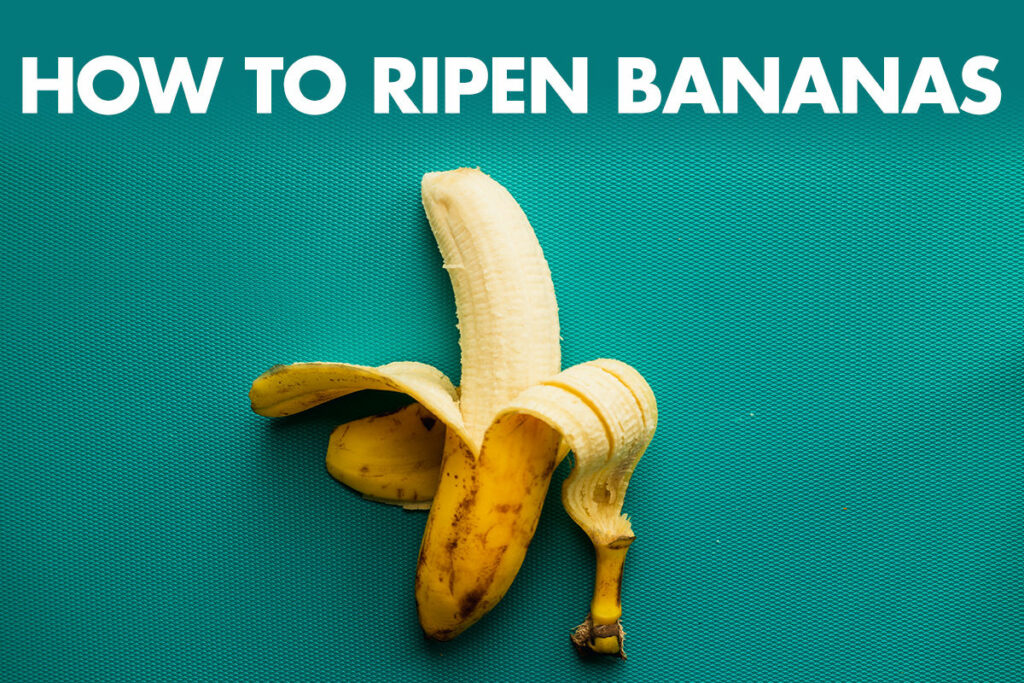
Back in the day I used to think banana ripening was foolproof. Just leave them out for a few days, right?
Then I bought a bunch that stayed neon green for a week, until they went brown practically overnight.
Turns out, banana ripening is both beautifully simple and scientifically specific. Once you understand the role of ethylene gas, enzymes, and temperature, you’ll never get caught with chalky, starchy fruit again.
And yes, we’ll talk about that oven hack (spoiler: it’s as misleading for bananas as it is for avocados).
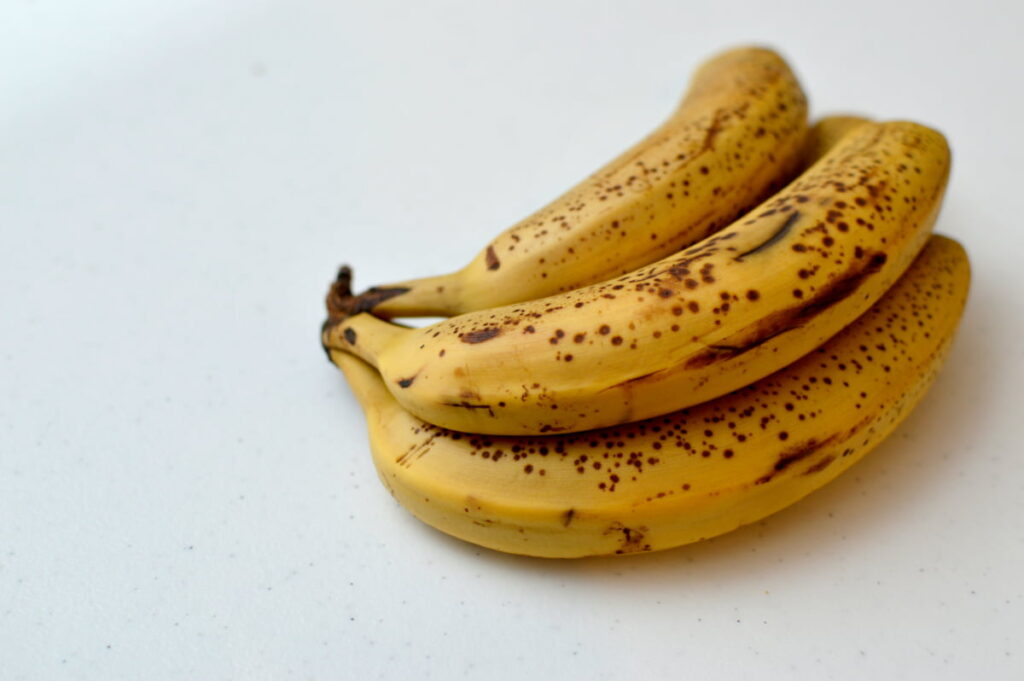
Quick Guide: Ripen Bananas Fast and Naturally
- Natural timeline: 2–5 days at room temperature (65–75°F / 18–24°C)
- To speed it up: Put bananas in a brown paper bag with an apple or tomato, the extra ethylene gas accelerates ripening 2–3×
- To slow it down: Move ripe bananas to the fridge, the skin darkens, but the inside stays perfectly sweet for another 2–3 days
Pro tip: Never refrigerate green bananas, cold halts ethylene production, leaving them starchy and dull.
The Science: How Bananas Actually Ripen
Bananas, like avocados, are climacteric fruits, meaning they keep ripening after harvest. The secret lies in ethylene, a natural plant hormone that triggers enzymes to convert starch into sugar.
Once bananas are picked, ethylene production ramps up, kicking off a chain reaction:
- Starches → Sugars (making them sweet)
- Chlorophyll → Yellow pigments (giving them color)
- Cell wall softening (creating that creamy bite)
According to postharvest research from the University of California, Davis, bananas are extremely sensitive to temperature:
| Temperature | Effect |
| Below 55°F (13°C) | Ethylene production slows, “chilling injury” can occur |
| Ideal range | 65–75°F (18–24°C), balanced ripening |
| Above 85°F (29°C) | Enzymes deactivate, fruit softens without flavor |
Natural vs. “Chemically Ripened” Bananas
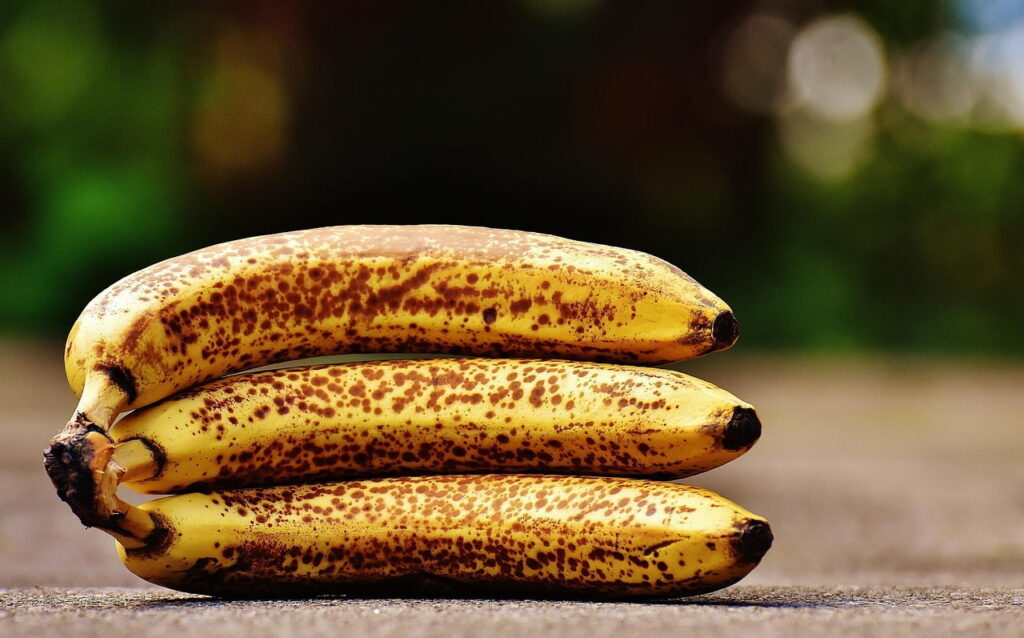
When it comes to ripe bananas, not all are the same. Some reach that perfect yellow naturally, while others get a little “help” along the way.
This tweet sums it up perfectly:
He’s right about the supermarket part, commercial bananas are ripened in temperature-controlled “ripening rooms” with regulated ethylene concentrations (100–150 ppm), ensuring even, safe results.
But artificial chemical ripening (still common in parts of Asia and Africa) often uses calcium carbide, a banned compound that releases acetylene gas, similar to ethylene but far harsher. It can cause uneven ripening and off-flavors.
Signs of natural ripening:
- Blackened stalks
- Even yellow color with natural freckles
- Sweet aroma
Signs of artificial ripening:
- Green stalks + brown spots
- Waxy or patchy yellow skin
- Faint chemical smell
How Bananas Are Naturally Ripened Around the World
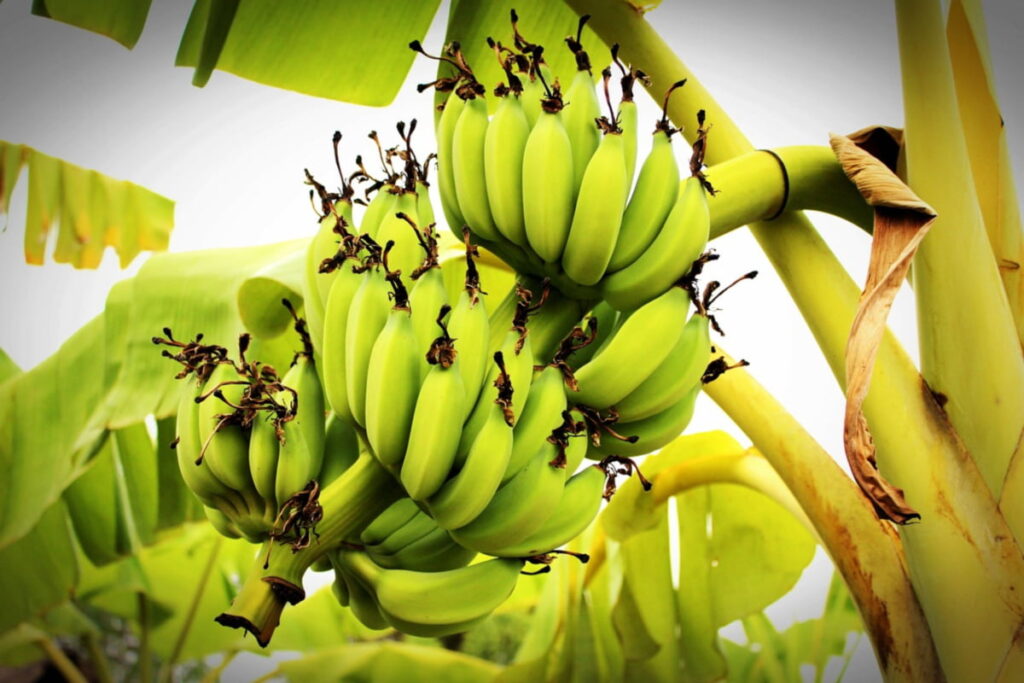
Of course, not everyone uses fancy ripening rooms. In many parts of the world, people still rely on traditional, low-tech methods that get the job done beautifully.
Here’s a short clip, showing a traditional Indian technique:
Farmers dig a pit, layer green bananas inside with straw or dried leaves, and cover it with soil.
The bananas’ own ethylene (and trapped warmth) create a perfect natural ripening chamber.
We’re obviously not burying ours in the backyard, but it’s a brilliant example of natural, controlled ethylene environments long before modern tech.
How to Ripen Bananas the Right Way
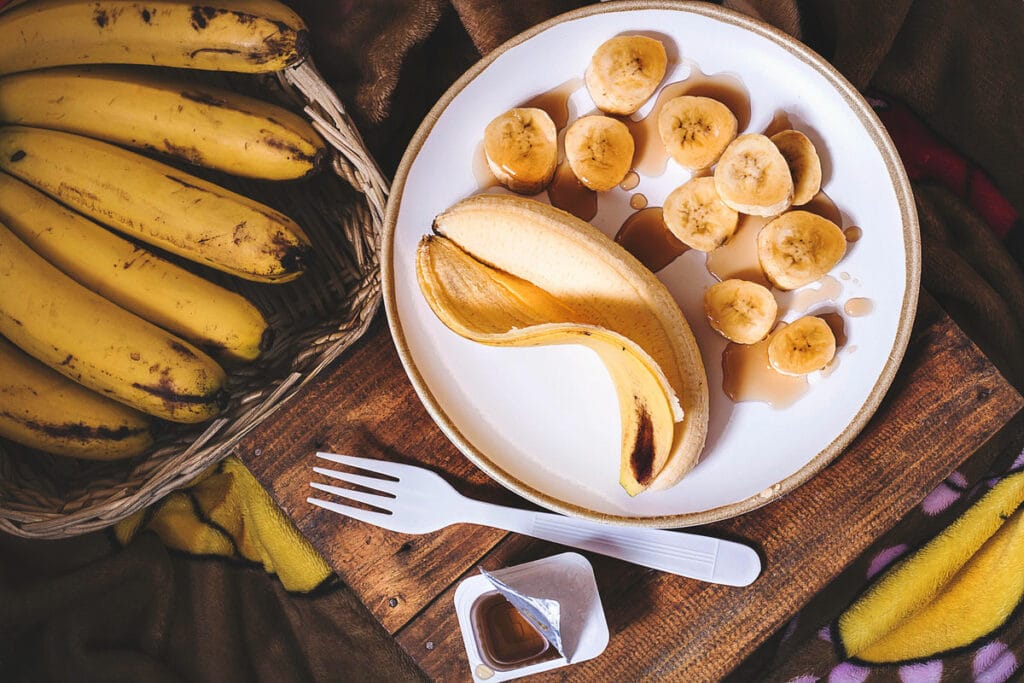
If you want to have ripen bananas, you’ve got options, depending on your patience level.
Method 1: Let Nature Do Its Thing (Best Flavor)
This simple method is for the patient ones, it gives the best-tasting bananas, every time.
- Separate bananas slightly to allow airflow
- Keep them at room temperature, out of direct sunlight
- Check daily, when peels go from green to spotted yellow, they’re ready
- Once ripe, move to the fridge (the peel darkens, but the fruit stays fine)
You’ll know they’re ready not just by color, but by smell, ripe bananas have that sweet, tropical aroma that fills the room. That’s from natural compounds called esters, which give them their signature banana scent.
Method 2: The Paper Bag + Apple Trick (Fastest Natural Way)
Bananas naturally release a gas called ethylene, which tells the fruit it’s time to ripen. The trick is to trap that gas long enough for it to do its job.
To keep the ethylene from escaping, and to add even more of it, place your bananas in a brown paper bag with another fruit that gives off lots of ethylene too, like an apple or a ripe tomato. That combo speeds things up dramatically.
Grab:
- A brown paper bag
- 1–2 bananas
- 1 apple or ripe tomato
Seal the bag loosely (they still need a little oxygen) and leave it overnight.
The apple’s extra ethylene creates a mini “ripening chamber,” helping your bananas turn yellow and sweet up to twice as fast.
“Keep your bananas in the bag, add two apples, seal the bag. The ethylene gas from the apples will ripen your bananas quicker.”
Usually, 24–48 hours later, perfectly yellow, sweet bananas.
Method 3: Hold Them at Peak Ripeness
Once bananas are ripe, slow the process:
- Refrigerate: The peel darkens, but the inside stays sweet and firm.
- Freeze (peeled): For smoothies or baking.
- Wrap stems in plastic: Reduces ethylene spread between bananas.
Storage hack: Wrap the crown (top stem cluster) tightly with cling film, it cuts ethylene exposure and can extend shelf life by 2–3 days.
You Might Like: How to Ripen Plantains Quickly
The “Oven Hack” and Why It’s a Myth
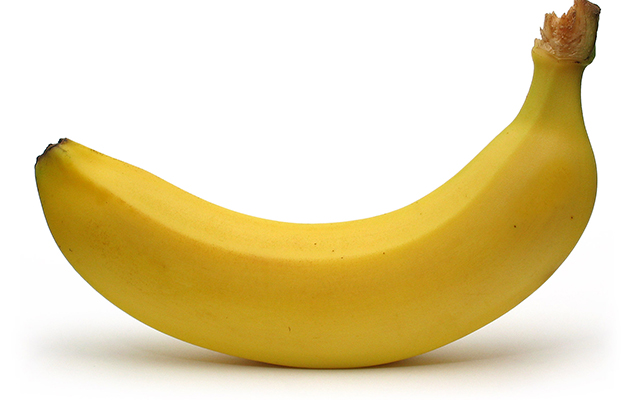
You’ve seen the viral trick, bake green bananas at 300°F (150°C) for 15 minutes to “ripen” them.
A video test like the one below proves it false:
Heat can make a banana soft, but that’s not the same as ripe.
Food scientist Harold McGee once wrote that real ripening isn’t just things breaking down, it’s a living process that creates flavor and aroma.
In other words: heat softens; it doesn’t ripen. You’re cooking, not converting. The banana might look ready, but it’ll taste starchy and flat.
What Not to Do
| Hack | Why It Fails |
|---|---|
| Microwave ripening | Heat cooks the fruit, doesn’t activate enzymes |
| Oven at high temps | Softens peel, kills ripening enzymes |
| Fridge too early | Stops ethylene, keeps bananas rock-hard |
| Plastic bags (no airflow) | Traps moisture, encourages mold |
| Sunlight on windowsill | Uneven heat = patchy ripening |
How to Tell When a Banana Is Ripe
| Stage | Peel Color | Texture |
|---|---|---|
| Green | Bright green | Hard, starchy |
| Turning | Pale green-yellow | Firm |
| Ripe | Yellow with freckles | Tender, aromatic |
| Overripe | Brown or black | Very soft, sugary |
You Might Like: How to Ripen Mangoes Quickly
Let the Fruit Do the Work
Bananas ripen best with time, warmth, and a little ethylene help, not microwaves or oven tricks. Whether you use the paper bag + apple method or just leave them on the counter, remember: real ripening is slow chemistry, not a shortcut.
As food scientist Harold McGee said, “Ripeness is all.” You can’t rush it, and that’s the beauty of it, the best flavor always comes to those who wait.
If you want to learn how to ripen other fruits the right way, from mangoes to pears to avocados, check out my How to Ripen Fruits Hub →

